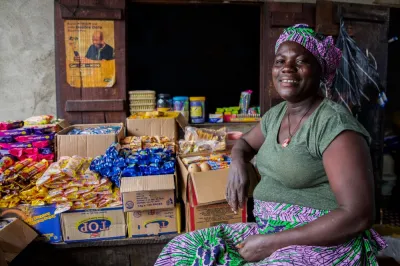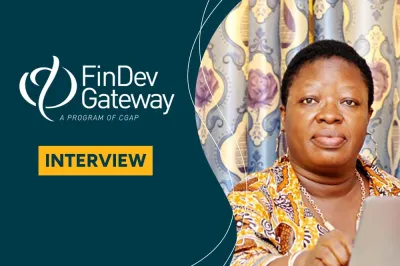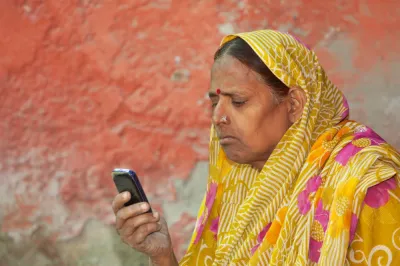Responsible Equity Exits: Lessons From Cambodia

Back in 2019, the music mega-star Taylor Swift learned that the master recordings of her first six albums had been sold for $300m to an investor whom Swift regarded as an “incessant, manipulative bully” that put his own interests ahead of the artist whose work he now owned. This was a classic case of an irresponsible exit. The seller – Swift’s old manager, who had played an important part in building up her stardom during the first decade of her career – chose to maximize returns, paying no heed to whether the buyer was a reasonable fit.
Now, imagine a similar scenario in the financial inclusion sector:
Consider an NGO that spent decades incubating a strong social mission in a financial institution serving poor clients, ending its involvement by selling all of its shares to an investor focused entirely on maximizing profits. Following the purchase, the buyer steers the institution away from its poorest clients, refocusing entirely on profits and dispensing with the niceties of impact measurement or even basic client protection.
That’s an extract from the recent joint publication by CERISE+SPTF and e-MFP which I co-authored, Rethinking Responsible Equity Exits. And it happens to be particularly appropriate to Cambodia.
Unrestrained growth in the Cambodian microfinance sector
The Cambodian microfinance sector was born as a series of development initiatives during the 1990s, which over time transformed into shareholder-owned institutions and even banks. Those early shareholders were almost exclusively development finance institutions and microfinance investment funds that describe themselves as social or impact investors. Over the past 15 years, nearly all major Cambodian MFIs have seen those original investors exit, selling their stakes to a mix of investors, ranging from private equity funds to regional banking conglomerates.
During the same 15-year period, the country’s microfinance sector has seen spectacular growth. In 2008, the combined microfinance and bank portfolio of Cambodian MFIs stood at just under $750 million, according to data from the Cambodian Microfinance Association (CMA). By 2023, the figure stood at nearly $14 billion. While Cambodia as a whole also experienced remarkable economic growth over that same period, the sheer volume of outstanding credit still raises serious concerns, especially the high risks of overindebtedness it entails.
High MFI valuations
This oversaturated credit environment is exactly the type of context we highlight in the recent CERISE+SPTF and e-MFP publication. One of our key arguments is that exiting from equity positions in an overheated market – a term that’s more applicable to Cambodia than any other – comes with extra responsibilities. This is because equity purchases are expressions of future growth strategies: buyers paying a high valuation are effectively locked into strategies of high growth and profitability. An investor paying a valuation slightly over book value (say 1.2x) has plenty of flexibility to weather years of slow growth and low profitability (measured here in return on assets, or ROA) and still break even. Yet as Figure 1 shows, an investor paying a valuation closer to 2x is a lot more constrained – it’s tough to slow down if you have to maintain an annual return of 2% and growth of 20% just to break even.

Looking at the history of Cambodian MFI exits, one can see several examples of high valuations, including during periods when concerns over market sustainability were already high. Exits from ACLEDA, Hattha Kaksekar, and PRASAC all featured valuations of 1.8x or higher, as Figure 2 illustrates:
Figure 2. Equity exits from leading Cambodian MFIs, 2009-2023
|
Microfinance institution |
Year sold |
Sellers |
Buyers |
Terms (USD amount, |
|---|---|---|---|---|
|
ACLEDA |
2009 |
FMO |
Jardine Matheson Group |
12.25% |
|
Sathapana |
2012 |
FMO, Triodos, Developing World Markets |
Maruhan Japan Bank |
95% |
|
Kredit (now Phillip Bank) |
2012 |
World Relief |
Phillip Capital |
|
|
Thaneakea Phum (now LOLC Cambodia) |
2014 |
Developing World Markets |
LOLC Group |
$20.3M, 60%, 1.0x |
|
ACLEDA |
2014 |
IFC |
Sumitomo Matsui |
$110M, 12.25%, 2.2x |
|
Hattha Kaksekar (now Hattha Bank) |
2016 |
Norfund, Oikocredit, Triple Jump, responsAbility |
Bank of Ayudhya |
$140M, 100%, 2.25x |
|
PRASAC |
2017 |
BIO, Dragon Capital Group, FMO |
LOLC Group and Bank of East Asia |
$186M, 47.75%, 1.95x |
|
AMK |
2018 |
Incofin, PROPARCO, Norfund, Agora |
Shanghai Commercial and Savings Bank |
80% |
|
VisionFund (now Woori Bank) |
2018 |
World Vision |
Woori Bank |
|
|
PRASAC |
2020 |
LOLC Group |
Kookmin Bank |
$603M, 70%, 1.85x |
* Expressed as price-to-book ratio, with book value calculated as average equity for year of sale & year prior to sale. Data collected from annual reports, press releases and other public sources.
What does such high growth mean for client protection?
As the market heated up, concerns about client overindebtedness and irresponsible lending practices grew. In December 2016, the Cambodian Microfinance Association recognized in its Temporary Lending Guidelines that “the aggregate growth rate for the microfinance sector needs to significantly slow down, through the adoption of sustainable sector-wide lending practices that avoid client overindebtedness [italics added].” These responsible lending practices were eventually written into formal commitments from all CMA members to limit lending which posed a high risk of overindebtedness. Compliance was independently monitored by the Credit Bureau of Cambodia (CBC), which produced a monthly dashboard for each CMA member. The CMA Lending Guidelines were also formally endorsed by the Smart Campaign, which in 2018 incorporated the guidelines and the CBC dashboard into its certification process for institutions that met its Client Protection Principles.
Despite these measures, from 2017 to 2020, the sector continued to grow at a heady rate of 29% per annum, according to CMA data, with some MFIs growing even faster. For example, PRASAC, the largest MFI in Cambodia at the time, was acquired by LOLC Group in 2017 at a 1.95x valuation. Over the next three years, it proceeded to expand its loan portfolio by an average of 35% per year. After those three years, the LOLC Group then sold its PRASAC holdings for $603 million, achieving a 121% return on its 2017 investment—an extraordinary number for such a short period.
What did this unfettered growth mean for microfinance clients, and specifically for client protection? In the case of PRASAC, it appears to have lost its previous Smart Campaign Client Protection Certification after being acquired by LOLC Group (it had been certified in December 2015, and would have had a mandatory renewal check-in two years later in December 2017, but by December 2018, it was no longer certified). Available evidence strongly suggests that the loss of this certification was linked to PRASAC’s violation of the Lender Guidelines. But even if it wasn’t, such high growth by the country’s largest MFI went directly against the CMA’s explicit admonition to its members to significantly slow growth in order to build long-term market sustainability and reduce overindebtedness. By choosing high growth over the sector’s own Lending Guidelines and its client protection certification, PRASAC’s new owners clearly showed their priorities.
What responsibility do exiting impact investors bear?
Who was ultimately responsible for putting growth ahead of client protection at PRASAC? While the new owners of an institution are certainly responsible once they are in charge, what about the exiting investors who chose to sell to those new owners? If they consider themselves to be social or impact investors, their responsibility continues through to a socially responsible exit strategy. In a market where growth presents serious concerns about market sustainability and client protection, a valuation of 1.8x or higher should serve as a clear warning sign, particularly for shareholders who advocate for and support client protection initiatives. As we argue in the CERISE+SPTF and e-MFP paper, early-stage impact investors can play an important role in safeguarding client interests by selling their shares only to owners who are willing to prioritize client protection and sustainable growth. When impact investors fail to do so, their exit can end up undoing years of client protection work that they and others have been funding.
This isn’t some theoretical notion – there are plenty of investors who have implemented a responsible exits strategy in practice. One example, also from Cambodia and a year after the 2017 PRASAC exit, is the 2018 sale of AMK to Shanghai Commercial and Savings Bank (SCBC). Led by Belgium-based Incofin and with three other investors joining, the sellers implemented a “Fitness and Compatibility Review,” with each interested buyer screened against a list of criteria to assess their commitment to respect and maintain AMK’s social mission, including client protection. The result speaks for itself – unlike PRASAC, AMK’s new owners continued to focus on its social mission, with portfolio growth barely half that of PRASAC’s during the same period, while maintaining its Client Protection Certification throughout.
It’s time to take the social impact of equity exits seriously. When it comes to ensuring sustainable markets where client protection practices are respected by everyone, shareholders have the single greatest role to play – they set the strategy, they hire the CEOs, and when they sell their stakes, it’s their job to ensure that they turn control over to investors who will continue to honor client protection commitments. And for shareholders of the largest institutions in the country, that responsibility is still higher, for they set an example for others to follow. It’s unreasonable to expect smaller actors to do the right thing when those at the front of the pack are clearly not following industry guidelines.
In the case of Taylor Swift, there was a karmic coda to the music. After learning that her original masters were bought by an investor she deemed an unsuitable custodian of her work, Swift decided to re-record those albums, redirecting the streaming revenues back to herself and rendering those old master recordings largely worthless. It’s spectacular music business jujitsu.
Unfortunately, there are no Taylor Swifts in this sector to right the ship. The clients of MFIs who risk falling into overindebtedness have no jujitsu moves to use when investors behave irresponsibly. And so it falls upon those investors – especially those who aspire to have long-lasting positive social impact – to put words into action and incorporate client protection into all of their decisions, including exits.



Good read and very good perspective.
Leave a comment